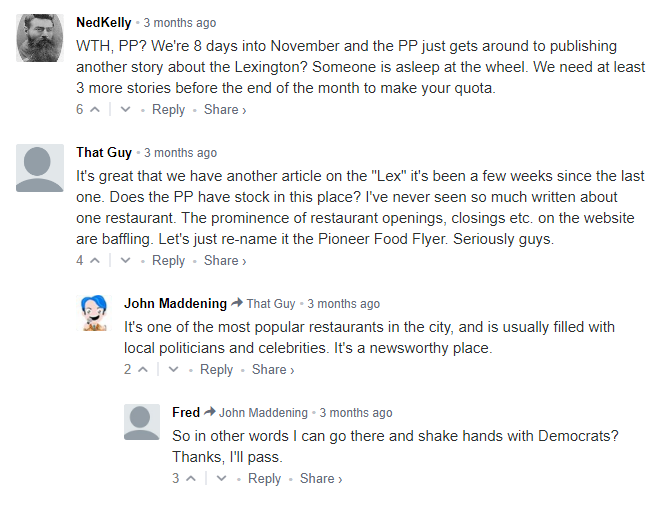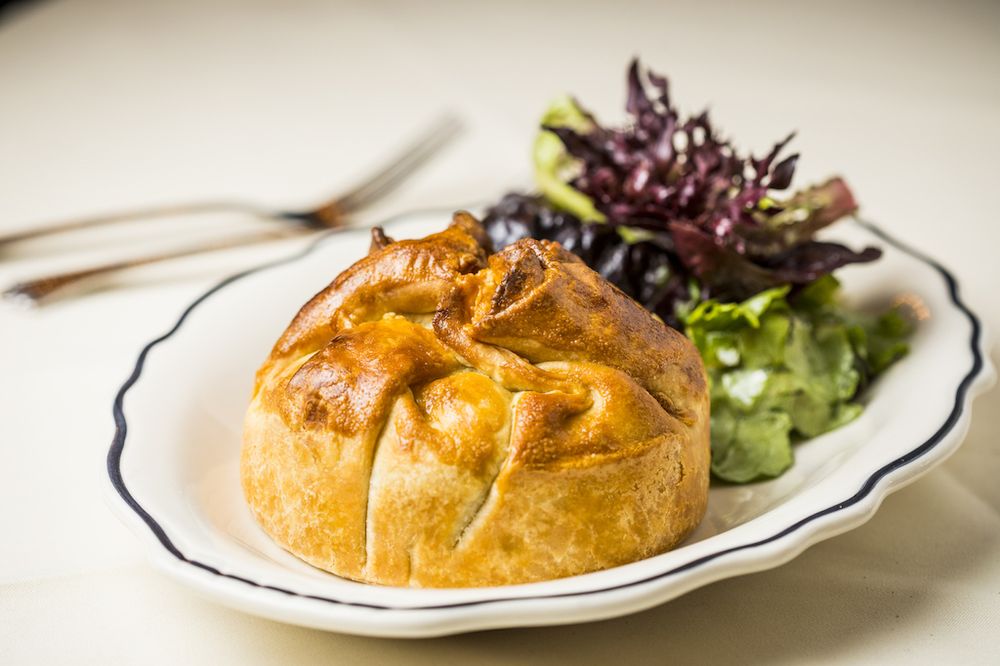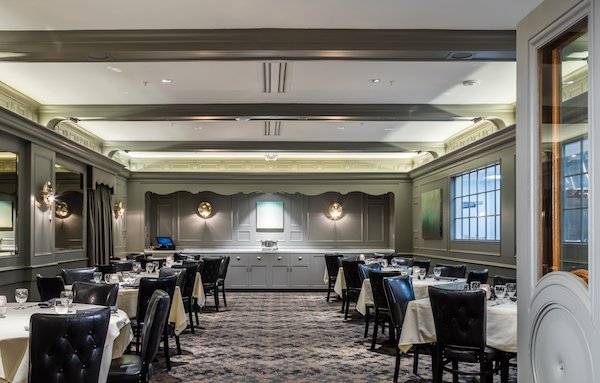
We’ve seen the accolades and almost-constant press. There’s a running joke in the Pioneer Press comments’ section about how long it will be until St. Paul’s oldest newspaper runs yet another story on the Lexington. They take bets (it’s fairly often).

We don’t need more of the same. This is more of an attempt to explain the why behind it all. Why this grandest of Grand Avenue restaurants is such a towering achievement in St. Paul – something, through all the fawning and detailed descriptions of the food, drinks, atmosphere, and entertainment, that is often missing from reviews.
Restaurant history
We can start with the history, and we should: You’ll see in the faces of most of the diners who frequent the Lexington that these are people who remember not only the restaurant when it was open originally, in a different era and under very different ownership, but they remember also the St. Paul that existed around it; a time that seems somewhat golden, when St. Paul was the more cosmopolitan older sister draped in pearls and long dresses.
But things change. Things end, and rise again.

Here’s the rub: As St. Paul slowly fights to become once again a bustling metropolis, a destination river city worthy of note, the Lexington’s triumphant revival signals two things – One, that St. Paul is ready for serious eating at/supporting of a high-end restaurant night-in and night-out, and two, that St. Paul remembers, embraces, and still supports a truly unique spirit that has faded from so many other once-mighty American cities.
This is a different St. Paul now. And, while the booming downtown department stores are gone, and top hat businessman no longer roam the streets with toothpicks between their teeth, I would be the first to argue that the city is headed in the right direction. The sepia-toned memories of St. Paul’s past are a romantic and charming painting that still exists on the walls of places like these, but its a time that can and should remain in the past. The future is now.
And the Lexington, at its best, embraces both.
The Lexington today
Here are a few examples:
The Beef Pot Au Pho, which combines pot roast-like beef with the rich spices and broth of a steamy Vietnamese pho (a nod to St. Paul’s Hmong population, who deserve credit for first injecting the culinary landscape with a little life, and a little spice) filling the borders of a classic French pot-au-feu. It’s an intelligent dish that manages to blend all things St. Paul: past, present, future at once.
Or the Smoked Lakefish Platter – something of a supper club staple that incorporates local whitefish, with salmon mousse and salmon roe with house-made pumpernickel toast and house-made pickles. So very Minnesotan, and still so very new.
And, of course, there’s the Pot Pie. A “2.0 or 3.0 version” as Beverage & Music Operations Director Geoffrey Trelstad calls it, but still as soul-hugging warm and delicious as a pot pie ever was.

(Though, if you’re going for the first time, there are so many things more innovative you should try first.)
But that’s the menu: Hearty steaks dressed up just enough with foie gras butter. Salads that make it okay to eat salad for dinner. Table-side service that knows why table-side was once the standard in fine-dining. It takes what the short-lived Salt Cellar tried to do in recreating old-world standards of luxury and perfects it by removing what no longer works.
Just enough old, and just enough new.
The space as well – the over-the-top flourish of old money hasn’t been wiped away completely, simply updated to incorporate the more minimalist aesthetic; the more subtle elegance of the here and now.
It’s not everyone that can appreciate change; not everyone who appreciates the time and effort and attention to detail that goes into these things.
But for those that do. Well. As they used to say in the old days, Eat your heart out.
If you don’t know, now you know
In order to understand the Twin Cities restaurant scene, in order to understand why it’s important to have good/great/ground-breaking restaurants, and why we should support the (sometimes self-indulgent) dreams of their chefs and owners, we have to look beyond the surface.
Some places are utilitarian; there to fill you stomach. And that’s okay.
But our restaurants can, and do, represent so much more – a piece of local culture, a blend of everything from the city, state, region around it, the one, unique place where memories, grandma and grandpa’s, mom’s and dad’s, and your own, can and will be made.
It’s places like the Lexington, in both the dream and the execution, that exemplify that. If you ever wonder why our food writers and “foodies” and enthusiasts talk about these places (everybody has their favorite – that special restaurant – the unforgettable experience) in almost wistful terms; in glowing reviews …tell your friends about it – you won’t be disappointed! that seem (borderline or completely) hyperbolic to those who don’t understand, this is why.

If, for just a moment, we step away from Yelp. If we look around the restaurant as we dine, and we look around the neighborhood before we even set foot inside (even, or especially, when it’s freezing out) to see how the place relates to, and fits in with, the landscape around it. If we think about what we’re ordering for dinner and why, and think about, maybe, why it’s on the menu in the first place; the thought that went into making it.
Then, and only then, can we understand that restaurants have a more important place in society (our society) and world. That they’re more than places only necessary when our stomachs grumble. We might, then, understand why people get so excited about places like the Lexington.
Read next: James Beard? In the Twin Cities, it’s all about Charlie
Watch: Mike’s Mix visits the Lexington


















